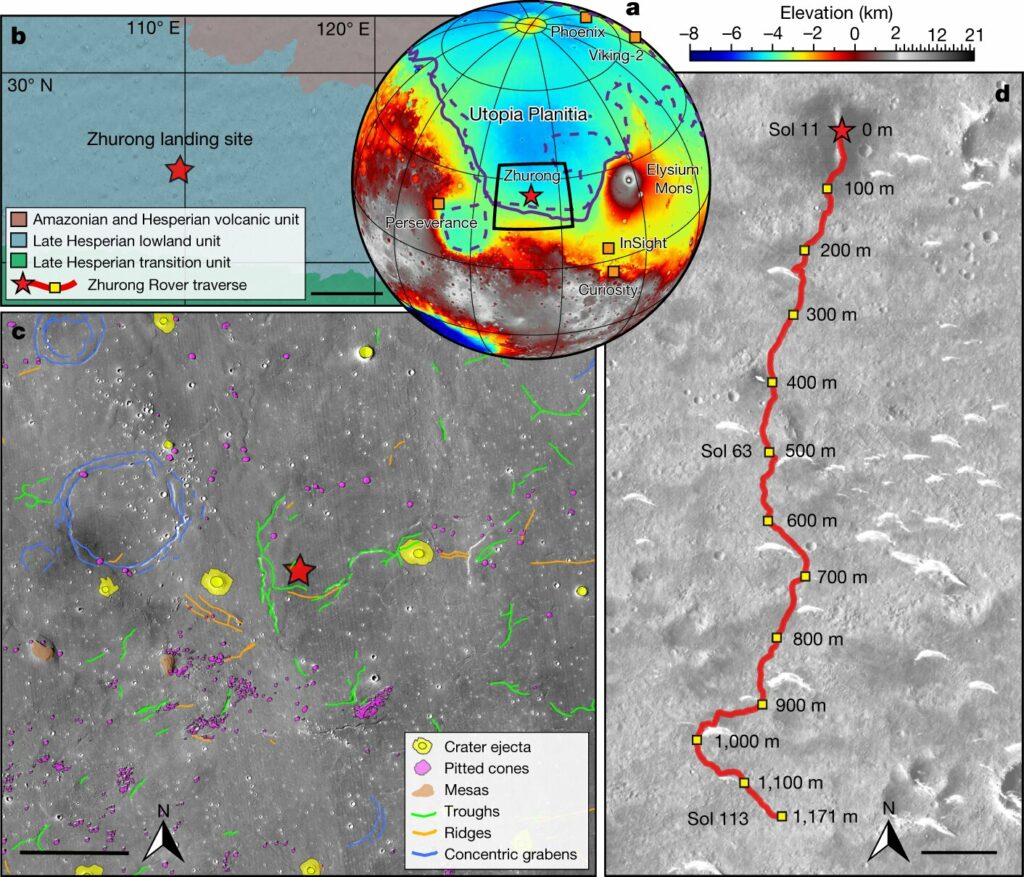Analysis of the data collected by the Chinese Zhurong rover revealed several layers of material located under the surface of the Utopia Planitia. According to scientists, they remained after the floods that occurred in this region billions of years ago.

The Zhurong rover landed on the Red Planet in May 2021. Since then, it has traveled over 1,100 meters across the Utopia Planitia, studying the surrounding terrain and soil. The scientific equipment of the rover includes a radar that allows mapping layers lying at a depth of 3 to 10 meters.Zhurong also has a device that can send low-frequency radio waves to a depth of up to 100 meters (although its resolution is much lower than that of a radar).
In the course of studying the data collected by these devices, a group of researchers from the Chinese Academy of Sciences identified at least two layers of material located under the surface of the Utopia Planitia. The first is located at a depth of 10 to 30 meters, the second is at a depth of 30 to 80 meters.
According to the researchers, these are the traces of two powerful floods. The first occurred about 3 billion years ago. The small stones brought by it settled on the larger ones, which formed a deeper layer. The second layer was formed in a similar way 1.6 billion years ago.
It is worth noting that the formation of such layers would require sufficiently powerful floods capable of carrying large stones. Previous studies showed that there was increased glacial activity on Mars during this time period. Scientists also draw attention to the fact that they have not found any evidence of volcanic activity in the corresponding epoch, which could lead to the creation of any of the layers.
Earlier we talked about the map created by ESA, which shows the position of mineral deposits on Mars that have an aquatic origin.
According to https://phys.org
Follow us on Twitter to get the most interesting space news in time
https://twitter.com/ust_magazine

